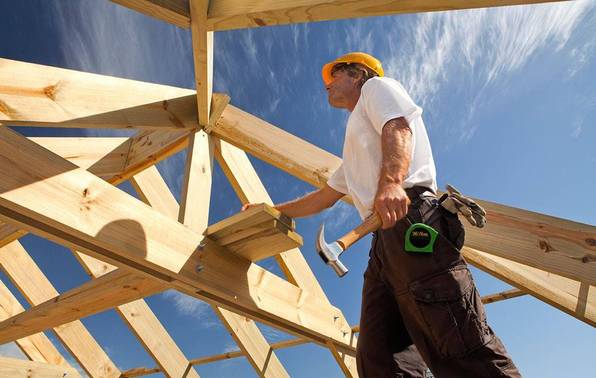Appliance maintenance
Most maintenance on appliances is simple and won't cost anything.
Most maintenance on appliances is simple and won't cost anything. And your appliances will last longer.
Fridge-freezers
- Clean door seals will last longer and seal better.
- Replacing damaged door seals can restore some cooling performance.
- Keep the heat exchanger coils at the rear of older models clean and dust-free.
- Follow the manufacturer’s recommendations for defrosting manual (cyclic) defrost models. Do not use utensils to scrape off frost as this can damage the refrigerator.
- On older frost-free models, clean the drain pan at the bottom of the fridge regularly. On some newer models the drain pan is at the back of the fridge, so you will need to pull the fridge out to clean it.
The refrigerator is the second biggest single energy consumer in the home after water heating. Frost-free models are generally less efficient than manual defrost. Consider replacing pre-2000 fridge-freezers with newer more energy efficient models available since 2005.
Microwaves
- Microwaves are susceptible to damage from power surges. Consider fitting a power surge protector.
- Clean your microwave regularly. Food splatters can get very hot and cause burns. Rust is common if salty spills get into the cracks. This is difficult to stop and expensive or uneconomic to fix.
- Keep the door seal area clean and check the oven for damage as this can cause microwave leakage.
Oven/stoves
- Follow manufacturer’s instructions on cleaning and maintaining your oven and hob.
- Check hinges and door seals for dirt and grease build up.
- Turn your oven off at the wall when you go away for any length of time.
- Ensure your oven is properly secured to prevent it toppling over in an earthquake. See the Earthquake Commission’s website for more information.
Dishwashers
- Clean out the dishwasher filter regularly. Check the manufacturer’s instructions on how to clean your particular model.
- Make sure the dishwasher is secured to the wall to prevent it toppling in an earthquake or when the door is open.
- You can also install backflow protection on dishwashers and isolating taps on the water supply. Speak to your plumbing retailer about this.
- Run your dishwasher full to make best use of the water and electricity you use
Energy efficient dishwashers heat their own water and do not require plumbing into the hot water supply. Each time you use a dishwasher you may be using up to 40 litres of water if it is a pre-1995 model. More efficient recent models use 14-20 litres per wash.
Dehumidifiers
Clean the filter regularly using a vacuum cleaner with a brush attachment. Dry the filter out before you do this.
Dehumidifiers cost a lot to run and removing the moisture doesn’t remove the cause. See this article for ways to reduce the moisture in your home to reduce the need for a dehumidifier.
Heaters
- Don't drape anything, including clothing or towels, over oil heaters - they can easily overheat and blow a fuse (or, in the case of some older models, catch fire). Use a drying rack.
- Make sure heaters are positioned on a level floor surface, away from curtains or furniture.
- Refer to manufacturer’s instructions for care and maintenance.
Unflued gas and kerosene heaters produce up to one litre of water vapour an hour during use. They also produce gases which can be harmful if allowed to build up. Avoid using this type of heater if you can, especially if your home tends to be damp. And never use them in small or unventilated rooms.
Washing machines
- Don't use too much detergent or use the wrong detergent in front loaders. Excess foam can cause electrical problems.
- Check water fill hoses for wear, damage, corroded fittings and leaks. Worn hoses could burst at any time. Corroded fittings mean the hose has leaked or is leaking now. Replace worn or damaged hoses and fittings.
- Check that the washing machine is level and sitting on a well-supported sub-floor. This will help balance the loads minimising potentially damaging vibration during high spin cycles. Ensure the washing machine is secured against toppling over in an earthquake.
- Check that the water discharge is not blocked, as this will cause flooding.
Clothes dryers
- Clear the lint filter after each load. This will improve the drying time. Lint buildup can also cause fires.
- Where dryers are wall mounted, check the fixings regularly. Secure non-wall mounted dryers against toppling over in an earthquake.
- Always vent dryers to the outside, not into the roofspace or under the floor.

Energy use
If you are replacing an appliance, check out the "Energy Rating" sticker of the models you are considering. The star rating gives an assessment of the model's energy efficiency, so you can compare it to other appliances. Each extra star saves you an extra 10% or so of running costs.
Some appliances have more than one ‘band’ of stars. Air conditioners have blue for cooling and red for heating performance, washing machines and dishwashers have red for warm washes and blue for cold washes.
The energy efficiency rating – the white number in the red box –gives an estimate of the annual energy consumption of the appliance. The lower the number, the less the model costs you in power bills and the more it helps the environment.
Water ratings are found on washing machines and dishwashers.

Building articles
Whether you're planning to build your own home or renovate an existing one, we've got you covered with a wide range of articles covering the whole process.

Renovating articles
Renovating and altering houses is a favourite pastime for many New Zealanders. Our articles take a look at what's involved when you undertake a renovation project.

Home maintenance
Regular maintenance is needed to ensure your house holds its value and remains safe and comfortable to live in.
Member comments
Get access to comment